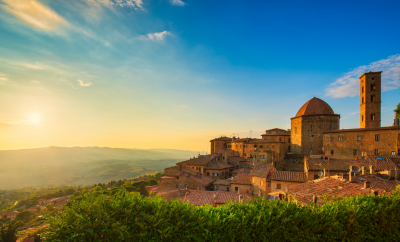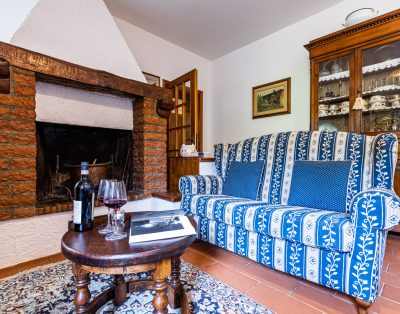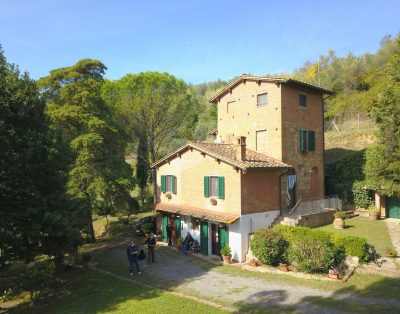Florence

Florence is a city in the province of Florence, and the city is the capital of the Tuscany region. It is the most populated city in Tuscany, with roughly 400 000 inhabitants, and the name stems from Latin: Florentia meaning the blossoming.. Florence is located by the river Arno located at the base of the mountain range Apennines.
Florence was a center for the medieval European trade and finance, and one of the richest cities at the time. It is considered by many academics to be the birth place of the Renaissance, and has been named the “Athens of the Middle Ages”. Its turbulent political history includes periods ruled by the powerful Medici family, and several religious, as well as republican, revolutions. Between 1865 and 1871 Florence served as the capital of the Kingdom of Italy (established in 1861).
Every year, the city attracts millions of tourists. In 1982, UNESCO declared the Historic Center of Florence a World Heritage Site. The city is famous for its culture, Renaissance art and architecture, and monuments. The city is also the home of numerous museums and art galleries, such as The Uffizi Gallery and Palazzo Pitti, and still serves as an influence within arts, culture, and politics. Due to Florence’s artistic and architectural heritage, the city has been ranked as one of the most beautiful cities in the world by Forbes.
Florence originated as a Roman city, and became the birth place of the Italian Renaissance after a long period as a flourishing medieval trading and banking commune. Florence was politically, economically, and culturally one of the most important cities in Europe, and the world, from the 14th to the 16th century.
The language spoken in the city during the 14th century came to be accepted as the model for what later became the Italian language. Thanks especially to the works of Tuscans Dante Alighieri, Petrarch, and Boccaccio, the Florentine dialect, above all the local dialects, became the basis for a nationally literary language.
Florence is known as the “cradle of the Renaissance” (la culla del Rinascimento) because of its monuments, churches, and buildings. The most famous place in Florence is the domed cathedral of the city, Santa Maria del Fiore, also known as The Duomo, whose dome was built by Filippo Brunelleschi. The nearby Campanile (partly designed by Giotto), as well as the Baptistery buildings, are also highlights. The dome, 600 years after its completion, is still one of the largest domes built out of brick and mortar in the world. Many of the most influential and important representatives during the Renaissance lived here, including Michelangelo, Leonardo da Vinci, Giotto, and Dante. The city center has preserved the medieval walls built during the 14th century to protect the city. At the heart of the city, in Piazza della Signoria, is Bartolomeo Ammannati’s Fountain of Neptune (1563-1565), a masterpiece of marble sculpture at the terminus of a still-functioning Roman aqueduct.
The layout and structure of Florence dates in many ways back to the Roman times, where it was designed as a garrison settlement, but nevertheless, most of the city was built during the Renaissance. Despite the strong presence of the Renaissance architecture in the city, traces of medieval, Baroque, Neoclassical, and modern architecture may also be found. The Palazzo Vecchio, as well as The Duomo, or the city’s Cathedral, are the two most dominant buildings of the Florence skyline.
The river Arno, which cuts through the old part of the city, is just as much of a character of the Florentine history as many of the people who lived there. Historically, the locals have a love-hate relationship with the river, which has been alternating between nourishing the city with commerce, and destroying it with floods. In particular, one bridge stands out – Ponte Vecchio (Old Bridge), whose most striking feature is the diversity of shops built upon the edges, and held up by decorative poles. The bridge also carries the elevated Vasari Corridor, linking the Uffizi to the Medici residence (Palazzo Pitti). Although the original bridge was built and constructed by the Etruscans, the current bridge was rebuilt in the 14th century. It is the only bridge in the city which survived the Second World War, and is still intact.
The church of San Lorenzo contains the Medici Chapel, the mausoleum of the Medici family – the most powerful family in Florence between the 15th and 18th century. Nearby is the Uffizi Gallery, one of the most beautiful art museums in the world – founded on a large inheritance from the last member of the Medici family.
Uffizi is located adjacent to the Piazza della Signoria, an important place in the center of Florence, both for civil life and the government, for centuries. Piazza della Signoria, to which is faces, is still the home of the municipal council.
Florence plays an important role in Italian fashion, and is ranked amongst the top 15 fashion capitals of the world by Global Language Monitor. Furthermore, Florence is an important national economic center, as well as a tourist and industrial hub.
The Florentine cuisine comes from a place of rustic traditions, and the majority of the meals are meat based. The traditional Offal (trippaandlampredotto) is still being sold as fast food from carts around the city. Tuscany bread is typically baked without salt, and frequently features in soups like ribollitaandpappa al pomodoro, and inpanzanella, a salad made with bread and vegetables which is often enjoyed during the summer. The most famous main dish from the Florentine cuisine is bistecca alla fiorentina, a large T-bone steak from the Chianina cattle, cooked over hot charcoal and served very rare. A more modern version of this dish is tagliata, sliced rare beef served on a bed of arugula with parmesan cheese and olive oil. Local olive oil from the region is generally served with most dishes.
Florence has a humid subtropical climate, tending to the Mediterranean. It has hot summers with moderate to light rainfall, and cool, humid winters. Florence does not have a prevailing wind, making summer temperatures higher than along the coast. Summers consist of low rainfall, while light precipitation dominates the winter. Snow flurries happen almost every year, but rarely results in accumulation of the snow.





